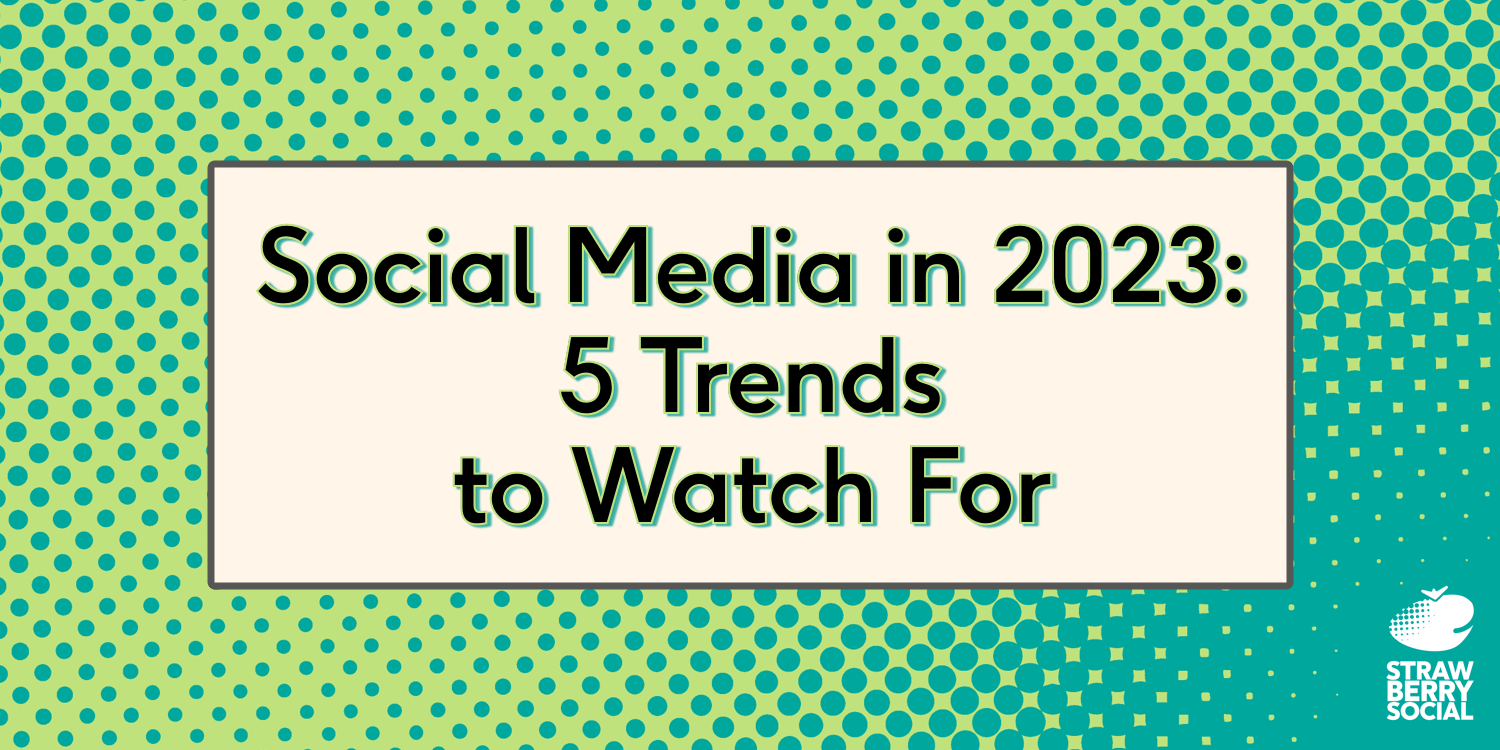Social media and online communities are a part of daily life for many of us, and social media platforms are often the primary space we interact with brands. Research done by GWI found that 43% of consumers use social media to look for more information about brands, products and services. In light of this, it’s important for brands and organisations to have a solid strategy in place and always be looking towards the future.
Here are 5 predictions from our team about what trends to expect in the world of social media and community management over the next year.
1. An increased focus on moderation and safety
With the proliferation of online hate speech, misinformation, and other harmful content, social media platforms and businesses will need to place a greater emphasis on moderation and creating safe, inclusive environments for their communities.
In 2022 we saw platforms change their approach with mixed results, some notable examples being Twitter’s new approach to verification getting off to a rocky start, in-house moderation teams shrinking and Meta’s internal oversight board found that policies were structured to protect the interests of business partners first.
In this fraught climate, it will be important for brands to do whatever they can to ensure that their spaces and content are moderated effectively and efficiently.
2. Video content will reach new heights
Video has been a dominant format on social media for many years, and this trend will certainly continue in 2023, with an emphasis on short and vertical formats in the style of TikTok. People watch an average of 19 hours of video every week, and 78% of users surveyed said that a video had convinced them to buy an app or a piece of software.
The growth has been cross-platform, for example. YouTube’s “Shorts” format was launched in June of 2021, and one year later was pulling in 30 billion daily views from global users.
Instagram’s Reels feature also saw tremendous growth over 2022 and search interest compared to Stories makes a strong case for the feature, which reached its search peak at the end of the year:
In 2022, Reels were the best-performing format on Instagram, with an engagement rate of 1.95% – at least double that of their other formats.
PS – did you know that 20/20 of teams in the Premier League are using Reels in their social strategy?
Businesses and organisations will need to find creative ways to incorporate video into their social media and community management strategies in order to engage and connect with their audiences. That also includes moderation of video content, something that can be a real challenge for automated tools.
3. An increased use of chatbots and AI technology
Chatbots and other AI-powered tools can help businesses and organisations to manage their online communities more efficiently and effectively. We’ve already seen some providers like Sprinklr offering sophisticated, customizable AI tooling for tasks like sentiment analysis and algorithmic detection of trends, but the power demonstrated by the launch of generative AI projects like Stable Diffusion, ChatGPT and Lensa means it’s highly likely that other community management and moderation tools will continue to incorporate this technology, and users will make use of them to create and interact with each other. As these tools become more common and “professional” versions launch, operators will need specific training in order to use them safely and effectively.
4. Greater focus on customer service
The unfortunate reality is that customer satisfaction and consumer confidence has been on a downward trend for some time. UK consumer confidence is at an all-time low and the picture is similar in the US. It will be crucial for businesses and organisations to continue looking for new and more effective ways to deliver excellent service, particularly if they want to stand out and capture the attention of customers.
Effective strategies will certainly involve the use of social media and online communities as channels for customer support and service—one survey found that 79% of consumers expected a brand to respond within 24 hours. To meet these SLAs and improve customer satisfaction, moderators and social media teams need to be operating at a very high level.
5. Influencer marketing grows, but becomes more personal
Influencer marketing is now a $16.4 billion dollar industry, its highest level ever. That doesn’t mean it’s all positive, however. Influencer fatigue is very real and brands would be wise to keep that in mind when designing influencer marketing strategies.
Influencers are posting more frequently, but engagement rates are going down. There is one exception, and that’s micro influencers; one survey found that micro influencers had an engagement rate 60% higher than macro influencers. TikTok is also continuing to demonstrate strength in this area, with 49% of users reporting making a purchase from the platform. That’s likely due to the emphasis on an authentic voice that’s quite different from the highly curated style often seen on Instagram, where brands are proscriptive with their influencers, often providing identical copy.
Wrapping Up
Looking at the above predictions, and the state of social media, based on our combined decades of experience in the space, it’s clear that “more, better and faster than ever before” will be the defining ethos of successful brands and organisations on social media in 2023.
Of course, putting together a rock solid strategy, supporting an existing community or running a successful campaign isn’t easy. If you’re looking for a helping hand with your social and community strategy, we’d love to hear from you.



 January 26, 2023
January 26, 2023  Share This Post
Share This Post